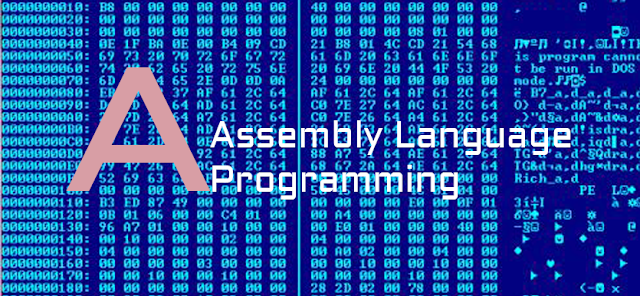Emu8086 - Assembly Code Compiling and MASM / TASM compatibility
Compiling Assembly Code
Type your code inside the text area, and click [Compile] button. You will be asked for a place where to save the compiled file.
After successful compilation you can click [Emulate] button to load the compiled file in emulator.
The Output File Type Directives:
#MAKE_COM#
#MAKE_BIN#
#MAKE_BOOT#
#MAKE_EXE#
You can insert these directives in the source code to specify the
required output type for the file. Only if compiler cannot find any
of these directives it will ask you for output type before creating the file.
Description of Output File Types:
-
#MAKE_COM# - the oldest and the simplest format of an executable file,
such files are loaded with 100h prefix (256 bytes). Select Clean from
the New menu if you plan to compile a COM file. Compiler directive
ORG 100h should be added before the code. Execution always starts
from the first byte of the file.
Supported by DOS and Windows Command Prompt.
-
#MAKE_EXE# - more advanced format of an executable file. Not limited
by size and number of segments. Stack segment should be defined in the
program. You may select EXE Template from the New menu in
to create a simple EXE program with defined Data, Stack, and Code segments.
Entry point (where execution starts) is defined by a programmer.
Supported by DOS and Windows Command Prompt.
-
#MAKE_BIN# - a simple executable file. You can define the values
of all registers, segment and offset for memory area where this file will
be loaded. When loading "MY.BIN" file to emulator
it will look for a "MY.BINF" file,
and load "MY.BIN" file to location specified
in "MY.BINF" file, registers are also set using
information in that file (open this file in a text editor to edit or investigate).
In case emulator is not able to find "MY.BINF" file, current register values are used and "MY.BIN" file is loaded at current CS:IP.
Execution starts from values in CS:IP.
This file type is unique to Emu8086 emulator.
".BINF file is created automatically by compiler if it finds #MAKE_BIN# directive.
WARNING! any existing ".binf" file is overwritten!
#LOAD_SEGMENT=1234# #LOAD_OFFSET=0000# #AL=12# #AH=34# #BH=00# #BL=00# #CH=00# #CL=00# #DH=00# #DL=00# #DS=0000# #ES=0000# #SI=0000# #DI=0000# #BP=0000# #CS=1234# #IP=0000# #SS=0000# #SP=0000#
Values must be in HEX!
When not specified these values are set by default:
LOAD_SEGMENT = 0100
LOAD_OFFSET = 0000
CS = ES = SS = DS = 0100
IP = 0000
If LOAD_SEGMENT and LOAD_OFFSET are not defined, then CS and IP values are used and vice-versa.
In case Load to offset value is not zero (0000), ORG ????h should be added to the source of a .BIN file where ????h is the loading offset, this should be done to allow compiler calculate correct addresses.
-
#MAKE_BOOT# - this type is a copy of the first track
of a floppy disk (boot sector).
You can write a boot sector of a virtual floppy (FLOPPY_0) via menu in emulator:
[Virtual Drive] -> [Write 512 bytes at 7C00 to Boot Sector]
First you should compile a ".boot" file and load it in emulator (see "micro-os_loader.asm" and "micro-os_kernel.asm" in "Samples" for more info).
Then select [Virtual Drive] -> [Boot from Floppy] menu to boot emulator from a virtual floppy.
Then, if you are curious, you may write the virtual floppy to real floppy and boot your computer from it, I recommend using "RawWrite for Windows"
(note that "micro-os_loader.asm" is not using MS-DOS compatible boot sector, so it's better to use and empty floppy, although it should be IBM (MS-DOS) formatted).
Compiler directive ORG 7C00h should be added before the code, when computer starts it loads first track of a floppy disk at the address 0000:7C00.
The size of a .BOOT file should be less then 512 bytes (limited by the size of a disk sector).
Execution always starts from the first byte of the file.
This file type is unique to Emu8086 emulator.
Error Processing
Compiler reports about errors in a separate information window:
MOV DS, 100 - is illegal instruction because segment registers cannot be set directly, general purpose register should be used:
MOV AX, 100
MOV DS, AX
MOV AL, 300 - is illegal instruction because AL register has only 8 bits, and thus maximum value for it is 255 (or 11111111b), and the minimum is -128.
Compiler makes several passes before generating the correct machine code, if it finds an error and does not complete the required number of passes it may show incorrect error messages. For example:
#make_COM#
ORG 100h
MOV AX, 0
MOV CX, 5
m1: INC AX
LOOP m1 ; not a real error!
MOV AL, 0FFFFh ; error is here.
RET
List of generated errors:(7) Condition Jump out of range!: LOOP m1
(9) Wrong parameters: MOV AL, 0FFFFh
(9) Operands do not match: Second operand is over 8 bits!
First error message (7) is incorrect, compiler did not finish calculating the offsets for labels, so it presumes that the offset of m1 label is 0000, that address is out of the range because we start at offset 100h.
Make correction to this line: MOV AL, 0FFFFh (AL cannot hold 0FFFFh value). This fixes both errors! For example:
#make_COM#
ORG 100h
MOV AX, 0
MOV CX, 5
m1: INC AX
LOOP m1 ; same code no error!
MOV AL, 0FFh ; fixed!
RET
When saving a compiled file, compiler also saves 2 other files that are used for Emulator to show actual source when you run it, and select corresponding lines.
- *.~asm - this file contains the original source code that was used to make an executable file.
- *.debug - this file has information that enables the emulator select lines of original source code while running the machine code.
- *.symbol - Symbol Table, it contains information that enables to show the "Variables" window. It is a text file, so you may view it in any text editor.
- *.binf - this file contains information that is used by emulator to load BIN file at specified location, and set register values prior execution; (created only if an executable is a BIN file).
MASM / TASM compatibility
Syntax of Emu8086 is fully compatible with all major assemblers including MASM and TASM; though some directives are unique to Emu8086. If required to compile using any other assembler you may need to comment out these directives, and any other directives that start with a '#' sign:
#MAKE_COM#
#MAKE_EXE#
#MAKE_BIN#
#MAKE_BOOT#
Emu8086 does not support the ASSUME directive, actually most programmers agree that this directive just causes some mess in your code. Manual attachment of CS:, DS:, ES: or SS: segment prefixes is preferred, and required by Emu8086 when data is in segment other then DS. For example:
MOV AX, [BX] ; same as MOV AX, DS:[BX]
MOV AX, ES:[BX]
Emu8086 does not require to define segment when you compile a COM file, though MASM and TASM may require this, for example:
CSEG SEGMENT ; code segment starts here.
; #MAKE_COM# ; uncomment for Emu8086.
ORG 100h
start: MOV AL, 5 ; some sample code...
MOV BL, 2
XOR AL, BL
XOR BL, AL
XOR AL, BL
RET
CSEG ENDS ; code segment ends here.
END start ; stop compiler, and set entry point.
|
Entry point for COM file should always be at 0100h (first instruction after ORG 100h directive), though in MASM and TASM you may need to manually set an entry point using END directive. Emu8086 works just fine, with or without it.
In order to test the above code, save it into test.asm file (or any other) and run these commands from command prompt:
For MASM 6.0:
MASM test.asm
LINK test.obj, test.com,,, /TINY
For TASM 4.1: TASM test.asm
TLINK test.obj /t
We should get test.com file (11 bytes), right click it and select A template used by Emu8086 to create EXE files is fully compatible with MASM and TASM, just comment out #MAKE_EXE# directive to avoid Unknown character error at line 11.
EXE files produced by MASM are identical to those produced by emu8086. TASM does not calculate the checksum, and has slightly different EXE file structure, but it produces quite the same machine code.
Note: there are several ways to encode the same machine instructions for the 8086 CPU, so generated machine code may vary when compiled on different compilers.
Emu8086 assembler supports shorter versions of BYTE PTR and WORD PTR, these are: B. and W.
For MASM and TASM you have to replace B. and W. with BYTE PTR and WORD PTR accordingly.
For example:
LEA BX, var1
MOV WORD PTR [BX], 1234h ; works everywhere.
MOV w.[BX], 1234h ; same instruction, but works in Emu8086 only.
HLT
var1 DB 0
var2 DB 0

emu8086 is better than NASM, MASM or TASM
Tag: 8086 Assembler, 8086 microprocessors instruction, assembly code, Assembly coding, assembly guide, assembly instruction, assembly language, assembly language instruction set, assembly language programming, Assembly program, assembly programming, capital letter, character convert, complete 8086 instruction sets microprocessors, complete instruction timing and instruction sets for 8086 microprocessors, conversion of characters in assembly language programming 8086, convert, emu8086, instruction complete set, instruction set complete for 8086, instruction sets, instruction sets for 8086, Lower case, Lowercase, print the small character into capital letter, programming 8086 assembly language conversion of small characters to capital, small letter, text string convert, Tutorial,Assembly Language : 8086 Assembler Tutorial Part 12
Assembly Language : 8086 Assembler Tutorial Part 11
Assembly Language : 8086 Assembler Tutorial Part 10
Assembly Language : 8086 Assembler Tutorial Part 9
Assembly Language : 8086 Assembler Tutorial Part 8
Assembly Language : 8086 Assembler Tutorial Part 7
Assembly Language : 8086 Assembler Tutorial Part 6
Assembly Language : 8086 Assembler Tutorial Part 5
Assembly Language : 8086 Assembler Tutorial Part 4
Assembly Language : 8086 Assembler Tutorial Part 3
Assembly Language : 8086 Assembler Tutorial Part 2
Assembly Language : 8086 Assembler Tutorial Part 1
Assembly Language Programming : Complete 8086 instruction sets
Assembly Language Programming : I/O ports - IN/OUT instructions
Assembly Language programming : Emu8086 Assembler Compiling and MASM / TASM compatibility
Assembly Language - string convert - Lowercase , Uppercase
for programming : the language of Number
Assembly Language - Complete Instruction Set and Instruction Timing of 8086 microprocessors
Assembly Language programming : A list of emulator supported interrupts
Assembly Language Programming : Emu8086 Overview, Using Emulator, Virtual Drives
Assembly Language Programming : All about Memory - Global Memory Table and Custom Memory Map
buy me a cup of coffee
My Paypal Account is : ksw.industries@gmail.com
Send me any small amount of money is welcome.buy me a cup of coffee
___________________________________________
Need More Detail ? contact me !!
My Paypal Account is : ksw.industries@gmail.com
buy me a cup of coffeeSend me any small amount of money is welcome.
___________________________________________
Don't know how to send money ? Click here for detail about Paypal account.
About PayPal Payment Methods
What type of PayPal accounts is better.
Don't have money? OK! Here is another way to get the program.
how to get my program - Free of charge

No comments:
Post a Comment